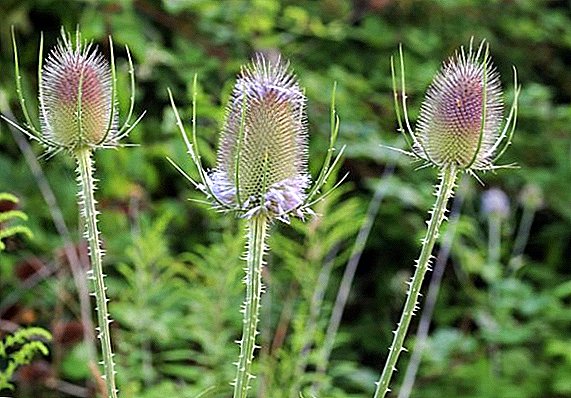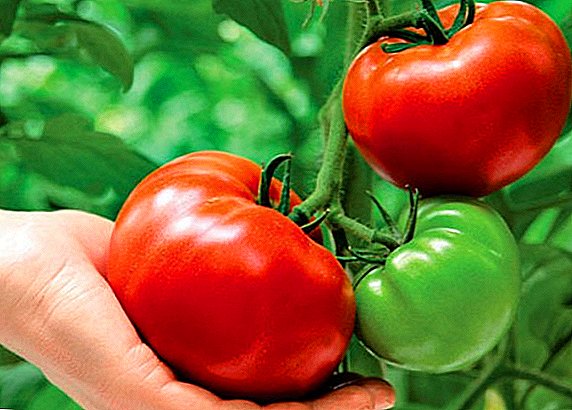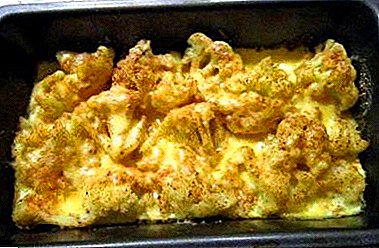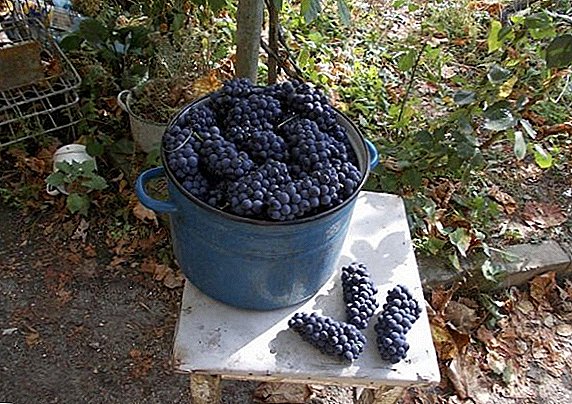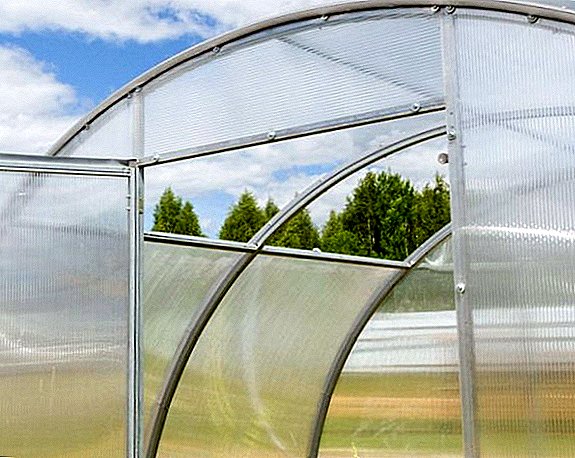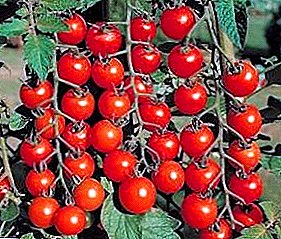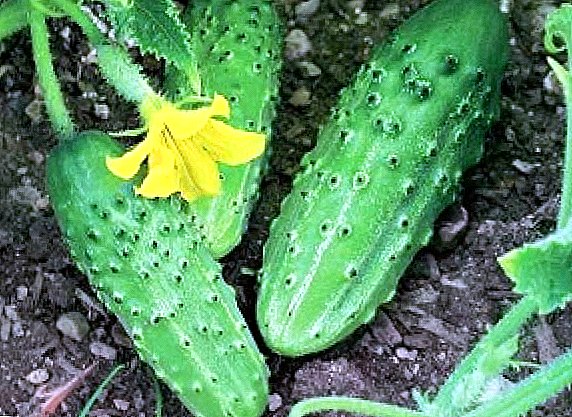
Even the most experienced gardener, who has planted various crops on his plot for more than one year, cannot fail to single out a couple of beds for cucumbers.
It has already become a tradition - in the summer we grow this crop, collect the fruit, roll it into banks, and in the winter we enjoy eating canned goods.
Some people think that it is necessary to plant any vegetables in an open ground, as if in its original form, and this is the only way to get the most useful and tasty harvests.
Cucumbers are a fastidious enough culture, so before you start breeding them, you need to thoroughly examine all the information related to the cultivation of cucumbers in the open ground.
And everything will be quite simple!
One of the most obscure points that must be clarified before planting cucumbers is the question of choosing a place. Because of their “fastidiousness”, the bushes or seeds may simply not take root in the wrong place, from which you will lose both the mood and the desire to grow this crop. Therefore, you need to find such a plot under the garden bed, which is located on the south side, is not blown by the winds, and is well lit by the sun.
In order to protect the delicate cucumber bushes from possible gusts of wind, planted such plants that will create a kind of screen. Corn, sunflower, legumes will be excellent options.
You can not dropping seeds or bushes in low areas or in too high, as in the lowland rainwater will drain, and the bushes on the hill will blow the wind.
Tomatoes, perennial herbs, cabbage, and potatoes are considered the best precursors for the cucumber culture. It is impossible to stir a cucumber bed at the place where zucchini, pumpkin or squash grew a year before, since these cultures have similar diseases to cucumbers.

But he himself will be the worst predecessor for the cucumber, otherwise the bushes may fall ill with powdery mildew. As for the soil itself, it should be fairly light, fertile, it should pass air well and contain a sufficient amount of humus.
Land preparation should begin in the fall, when the next season is over. The site needs to be dug up, and it is necessary to loosen up 25 - 30 cm of the earth. In order to increase the degree of soil fertility, you need to make 4 - 6 kg of manure per unit area.
Cucumbers do not tolerate soil with high aciditytherefore, in order to reduce the level of acidity, it is necessary to add lime to the manure - 0.1-0.15 kg per square meter. meter.
As for mineral supplements, phosphate and part of the potash fertilizers need to be done in the autumn. In the spring, the ground also needs to be loosened, since the ground is sufficiently compacted during the autumn-winter period.
After loosening, the rest of the potash and all nitrogen fertilizers should be applied. It is very important to preserve the moisture that has accumulated in the soil during the winter. For this you need 1 or 2 times to cultivate the soil, but the surface.
Before planting, about a week and a half, you need to prepare the beds themselves. The best option for cucumbers would be the so-called "warm" bed. For its construction you need to take a few plywood boards or sheets of slate and drive vertically into the ground.
At the bottom of the formed trench need to put branches, fallen leaves, pine needles, straw and peat, and the height of this layer can reach up to 50 cm. Next you need to disinfect the whole mixture. To do this, garbage must first be poured with boiling water, and then thoroughly treated with a strong solution of copper sulphate.
When decontamination is completed, a special mixture should be poured onto the existing layer, the thickness of which should be up to 12-15 cm. This mixture should be made from good sod land, humus, peat and sawdust. After everything is already laid, you need to disinfect the bed again with a solution of potassium permanganate.
It also does not hurt fertilizing with mineral fertilizers.
When all preparations are complete, the bed must be covered with transparent polyethylene and leave until planting seedlings. Due to the decomposition of organic waste and humus, the temperature of the earth in this garden bed will be higher than that of the rest of the soil. That is why this method is called growing on a warm bed.
But if you cannot make such preparations, then you can simply drift the seedlings into the ground, but after that you will need to make a cover of arcs and transparent polyethylene. Such a shelter can be removed only when the seedlings are sufficiently strengthened and finally take root in the open ground.

Seeds can be laid immediately on the bed, and you can apply the seedling method.
The first option is suitable only for those regions where climatic conditions are quite comfortable. But if you are not sure that the seeds are guaranteed to germinate, it is better to grow seedlings at home.
When sowing seeds directly on the bed can be done only when it is "warm", otherwise germinating and do not need to wait. The timing of such planting is quite long - you can start planting from the end of May, and end at the end of June. The main thing is that the temperature of the soil reaches 12 - 14 ° C.
Sure to prepare planting material. It is best to use seeds from the manufacturer, rather than home ones, as it is not a fact that you will get the expected result. Purchased seeds are often already decontaminated and not empty, but if you are not sure, you can perform these procedures yourself.
To remove all the empty seeds, you need to dip them in a solution of table salt and leave them there for a short time. In a few minutes the empty seeds will rise to the surface, and the quality will settle. Precisely settled seeds need to be planted.
To disinfect the planting material, you need to process them with a solution of potassium permanganate. Also growth boosters can be usedso that shoots appear faster.
After all this, the seeds should be soaked until they swell and the first small sprouts appear. To properly perform this procedure, you need to wind the seeds in a cloth and immerse them in water at room temperature. They need to be poured so that the surface of the water was slightly higher than the seeds themselves, so as not to block the access of oxygen.
After such naklevyvaniya should harden the seeds. To do this, they need to be put in the freezer so that the air temperature is -1-2 ° C. After the expiration of 48 hours, the seeds need to get their freezer and immediately prikopat.
When planting directly on a bed, seeds should be dripped quite widely, at intervals of about 50 to 60 cm. They should be submerged to a depth of about 5 to 6 cm, lightly pressing a finger and sprinkled with earth.

If you chose a seedling method, then you need to prepare the seeds in the same way. To prevent them you need in a special soil, which can be found in any store for gardeners.
Together with the land for seedlings you can buy special containers for seedlings. these can be plastic cassettes as well as peat pots, from which you will not need to reach the seedlings when planted, but drop them along with the bushes.
If you decide not to buy these pots, then the usual plastic cups will do. Tanks need to be filled with soil and put there 2 swollen seeds.
Before the appearance of the first shoots, the temperature must be maintained at + 24 + 27 ° С, and pour water at room temperature. To keep the moisture longer, before the emergence of the seedlings, it is better to cover with plastic wrap or glass.
In the case of germination of both seeds, it will be necessary to remove the weaker sprout. You can not pull it out; you just need to cut it near the root so as not to cause mechanical damage to another seedling. When the first shoots appear on the surface, the temperature should be lowered to +18 - 20 ° С.
It is very important to provide the seedlings with sufficient lighting, otherwise there is a risk that it will stretch. When will be 25 - 30 days from the moment of the appearance of the first shoots, the seedlings will be dripping. On 1 square. Meter can be placed no more than 3 seedlings.
It is also interesting to read about the cultivation of cucumbers in the barrel.
Cucumber Care Tips
- Watering
- Top dressing
- Tying up
- Protection

For cucumbers, the humidity of the air and the soil is very important, so watering plays an advanced role in the care of cucumber bushes. The sheets of these plants have a very large evaporation area, moreover, they are constantly under the scorching sun, so the water consumption is extremely large.
Water should be at room temperature, that is, not lower than + 20 ° C. It is necessary to fill the lack of moisture immediately after the germination of the seeds, if the seeds were immediately planted in the ground. Watering seedlings also need do regularly.
If the air temperature rises above + 25 ° C, then watering should become everyday in order to cool the leaves. If it is below + 25 ° C, then watering the bushes every day is even forbidden, otherwise the soil will create a favorable environment for the development of diseases.
The best time for this procedure is the hours of the early morning or the evening after sunset. It is undesirable to perform these actions during the day when the sun is high, since, if a part of the water gets on the leaves, plants can get sunburn.
When the bushes enter the most active vegetative phase, that is, they start to bear fruit, then you need to water them day and night, and at the root with a watering can. It is undesirable to use a hose or buckets for such a procedure, since the roots may become bare at such irrigation, which ultimately causes the bushes to die.
The amount of watering depends on the intensity of drying of the soil, but on average it is 1.5 - 2 buckets per plant.

The first feeding should be carried out when 2 true leaves have already appeared on the saplings of the seedlings. But, if the seedlings are already strong enough, then there is no need to apply fertilizer.
If you decided to feed sprouts, then you need to make a solution of 10 liters of water, 10 g of ammonium nitrate, 10 g of potassium salt and 10 g of superphosphate for 10 to 15 bushes. When 15 days have passed since the first procedure, you can repeat it, but the number of fertilizers themselves will need to be doubled.
It is impossible for fertilizers to fall on the stem of the plant, as chemical burns may remain on the bushes. If the degree of fertility is low, or the bushes do not develop well enough, then instead of mineral fertilizers during the second feeding you must add a solution of mullein or chicken manure.
If you notice that all the ovaries have fallen on the bushes, and the leaves have turned yellow, then this is a sure testimony that the plants do not have enough nutrition.

Today, the tapestry method of growing cucumbers has become very popular among gardeners, as the bushes, which are woven along the support, are much less likely to get sick due to the lack of contact between the stem and the soil. In addition, this method increases the amount of free space, and the harvest process becomes much easier.
As for the optimal time for the garter, it comes when the bushes reach a length of 30 cm. The most important thing in this procedure is not to damage the shoots themselves.
Not only tapestry structures can be used as a support. You can put two stakes near the bush, and between them pull the wire or rope, to which you will need to tie up the bushes. It is better to tie the stems with wide strips of fabric that will not be able to injure the bush, and also to keep it in strong gusts of wind.
You can not very tightly tighten the fabric, so as not to accidentally block the juice current to the top of the shoot.

The most common diseases of cucumber are verticillary wilt, false and true powdery mildew, olive blotch and mosaic virus.
In fact, all these diseases have one method of treatment. Bushes need process solutions of copper-containing fungicideswhich guaranteed to exclude the possibility of infection, or simply kill the fungus.
Processing should be done 3 - 4 times with a break of 10 days. Preventive and therapeutic measures are the same. It is also possible to use not fungicides, but other preparations that contain copper. Use them according to the instructions.
Now it is clear that the cultivation of cucumbers in the open field is not something very difficult. Just enough to remember that cucumbers are very delicate plants. But the most important thing is to treat your plants with love and care, because they are alive and feel everything. As a result, they will pay you with the same coin.


